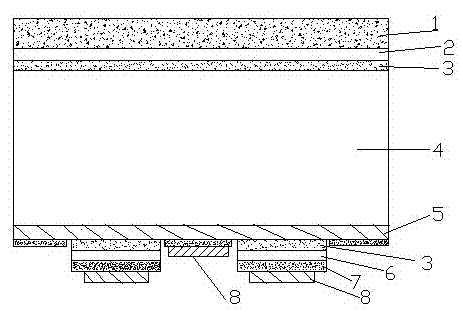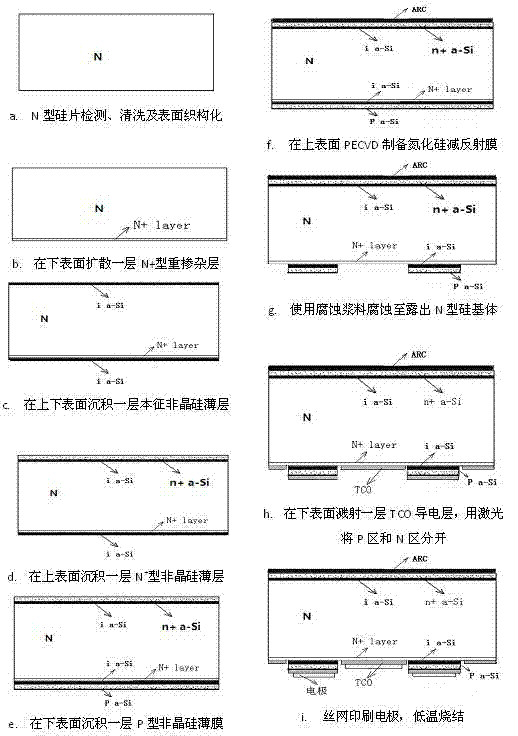Back contact heterojunction solar battery based on N-type silicon slice
A solar cell and heterojunction technology, applied in the field of solar cells, can solve the problems of increasing the density of carrier recombination defects, affecting the collection and transmission of photogenerated current, affecting the conversion efficiency of solar cells, etc., to simplify appearance requirements and save production time. , the effect of improving the conversion efficiency
- Summary
- Abstract
- Description
- Claims
- Application Information
AI Technical Summary
Problems solved by technology
Method used
Image
Examples
Embodiment 1
[0029] Using the plasma enhanced chemical vapor deposition (PECVD) process, a layer of intrinsic amorphous silicon film 3 is deposited on the upper and lower surfaces of the crystalline silicon after diffusion at 250°C, with a thickness of about 5nm, which has a passivation effect; deposited on the upper surface of the crystalline silicon A high-concentration N+ a-Si amorphous silicon thin film 2 with a thickness of 5-10nm; a thin layer of P-a-Si amorphous silicon 6 with a thickness of 5-10nm is deposited on the back surface; Silicon nitride light-receiving surface anti-reflection film 1 is grown on the front surface, with a thickness of 85nm and a refractive index of 2.05; its function reduces the reflection loss on the surface of the battery, and the light reflection loss of the solar battery after coating can be reduced to less than 4%; Effective surface passivation and bulk passivation, reducing recombination centers, improving minority carrier lifetime, and increasing photoc...
PUM
 Login to View More
Login to View More Abstract
Description
Claims
Application Information
 Login to View More
Login to View More - R&D
- Intellectual Property
- Life Sciences
- Materials
- Tech Scout
- Unparalleled Data Quality
- Higher Quality Content
- 60% Fewer Hallucinations
Browse by: Latest US Patents, China's latest patents, Technical Efficacy Thesaurus, Application Domain, Technology Topic, Popular Technical Reports.
© 2025 PatSnap. All rights reserved.Legal|Privacy policy|Modern Slavery Act Transparency Statement|Sitemap|About US| Contact US: help@patsnap.com



